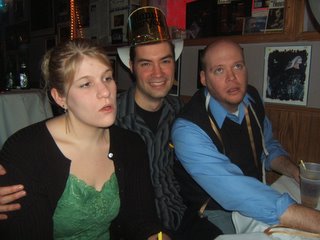Morrison's work offers two very different journeys. We see Nel, whose journey is rather conventional and Sula whose journey is quite the opposite. Through Sula's experience, we see the ways in which Nel maintains a life of safety. Morrison's use of bird imagery gives Sula a sort of monomythic status. When she returns to the Bottom (which is the highest part of town) in 1937, she is accompanied by a plague of robins. She has returned from college and city life with an even greater sense of herself. on page 92 when local women tell her she should return to domestic life, get a husband and a child. Sula's response: "I don't want to make somebody else. I want to make myself." Sula's constant assertion of self stands in contrast to Nel's adherance to convention. And yet these two are continually associated with each other as if they are one person. Sula's return is a boon to Nel "Although it was [Nel] alone who saw all this magic, she did not wonder at it. She knew it was all due to Sula's return to the Bottom" (95). And further along, Sula is described as never competing, but rather helping others define themselves. Sula is so completely sure of herself, whereas Nel's journey is typified by identity confusion. As a child her mother straightens her hair and puts a clothes pin off her nose. She has so little identity that she is forced to observe that conversations with Sula were really conversations with herself. Later Eva says "You. Sula. What's the difference?" Events like the killing of Chicken-Little, the discovery of Sula with Jude, Nel's final meeting with Sula and then with Eva, and events like National Suicide day, all become chapters in Nel's heroic journey. And they are all woven around Sula. In the end it is a sorrow over the loss of Sula, not Jude, that grieves Nel. In this way the ending is almost exactly like the death of Beowulf. Compare:
'A Geat woman too sang out in grief;
with hair bound up, she unburdened herself
of her worst fears, a wild litany
of nightmare and lament: her nation invaded,
enemies on the rampage, bodies in piles,
slavery and abasement. Heaven swallowed the smoke.' (ln. 3150-55)
and:
Leaves stirred; mud shifted; there was the smell of over-ripe green things. A soft ball of fur broke and scattered like dandelion spores in the breeze.
"All that time, all that time, I thought I was missing Jude." And the loss pressed down on her chest and came up into her throat. "We was girls together." she said as though explaining something. "Oh Lord, Sula," she cried, "girl, girl, girlgirlgirl."
It was a fine cry - loud and long - but it had no bottom and it had no top, just circles and circles of sorrow.
The loss of each hero culminates in a disorder - the boon is no longer available to those remaining.
Sula is an outsider especially when she comes back to the Bottom. Pious women look down on her. She even becomes an outsider with Nel after her encounter with Jude. But Morrison really creates a situation that makes one wonder just who is the outsider. Sula is completely comfortable with herself and what she wants. It is the others who are outsiders to her. Like Hester Prynne in the Scarlet Letter, Sula is a social outcast - a woman of easy virtue. What is most difficult about her status is that the bifurcation set up in her and Nel is disrupted when Nel refuses to associate with Sula. Oddly it is Nel who is alone at the end of the novel - she is an outsider, but she's gained knowledge.
Religion is one of the means of exclusion. Church-going women use piety as an excuse for their distain of Sula. Religion is usually a reaction to something or behavior is shown in reaction to religion. National suicide day saves Christ the trouble of redemption (16). Helene's piety is a reaction to her mother's profession as prostitute. Chicken-Little's funeral shows how religion is many things for many people, primarily a need to find security in the hand of a God who can destroy those who do not seek refuge in it (65-6). Plum's wish to reenter Eva's womb carries a certain 'born-again' message. Sula and Eva argue about religion - and Sula asserts her right to her beliefs. In the explanation of the differences between Sula and the women of the Bottom, Morrison writes: "...for in their secret awareness of Him, He was not the God of three faces they sang about. They knew quiet well that He had four, and that the fourth explained Sula. They lived with various forms of evil all their days, and it wasn't that they believed God would take care of them. It was rather that they knew God had a brother and that brother hadn't spared God's son, so why should he spare them?" (118)

